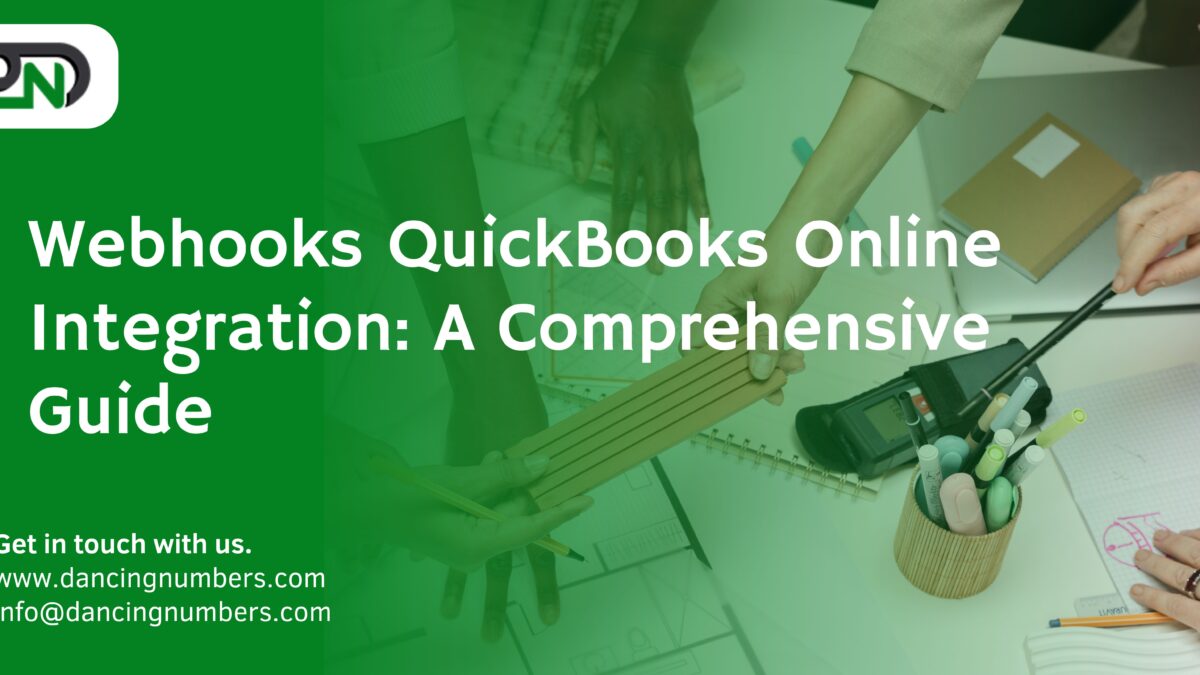In the era of digital finance, integrating web-based applications with accounting software has become crucial for efficient business operations. QuickBooks Online (QBO), a leading accounting software, offers extensive capabilities for managing finances. By leveraging webhooks, developers and businesses can create dynamic, real-time interactions between QuickBooks Online and other applications. This guide provides an in-depth look at how to integrate webhooks QuickBooks enabling automation, enhancing data accuracy, and improving workflow efficiency.
Understanding Webhooks and QuickBooksOnline
QuickBooks Online is a cloud-based accounting solution designed to manage sales, expenses, payroll, and inventory. It’s tailored for small to medium-sized businesses, offering features like invoicing, payment processing, and financial reporting.
Webhooks, on the other hand, are user-defined HTTP callbacks that are triggered by specific events. If an event occurs in one system, it can notify another system immediately via a webhook. This makes webhooks an essential tool for real-time data synchronization between different applications.
Why Integrate Webhooks with QuickBooks Online?
Integrating webhooks with QuickBooks Online can automate data entry, reduce errors, and save time. For instance, when a new order is placed on your e-commerce platform, a webhook can automatically create an invoice in QBO. This seamless flow of information ensures that your accounting records are always up-to-date without manual intervention.
Prerequisites for Integration
- QuickBooks Online Account: You need an active QBO account with administrative access to integrate webhooks.
- Developer Account: Sign up for an Intuit Developer account to access QuickBooks Online APIs.
- Understanding of Webhooks: Familiarity with how webhooks work, including request and response formats.
- Secure Endpoint: A server endpoint with HTTPS to ensure secure communication between your application and QuickBooks Online.
Step-by-Step Guide to Integrating Webhooks with QuickBooks Online
1. Setting Up Your Developer Account and Application
- Sign up for an Intuit Developer account at the Intuit Developer Portal.
- Create a new app and select the QuickBooks Online and Payments platform.
- Note down your app’s credentials (Client ID and Client Secret) for authentication purposes.
2. Configuring Your Webhook
- In your application settings on the Intuit Developer Portal, navigate to the ‘Webhooks’ section.
- Specify the endpoint URL where QuickBooks Online will send webhook notifications.
- Select the events that should trigger the QuickBooks webhook. QuickBooks Online supports a variety of events, such as the creation of invoices, changes in customer information, and payments.
3. Securing Your Webhook
- Ensure your endpoint is HTTPS to secure data transmission.
- Implement a verification mechanism to validate the data from QuickBooks Online using the verify token provided by Intuit during the webhook configuration.
4. Handling Webhook Notifications
- Write code to parse the JSON payload sent by QuickBooks Online to your endpoint.
- Depending on the event, update your application’s database or trigger specific actions. For instance, if the webhook notifies you about a new payment, you can automatically update the order status in your system.
5. Authenticating API Requests
- Use the OAuth 2.0 protocol for authenticating API requests to QuickBooks Online.
- Exchange your Client ID and Client Secret for an access token.
- Include the access token in the header of your API requests to QuickBooks Online.
6. Testing and Monitoring
- Use tools like Postman or your application logs to test and monitor the webhook’s performance.
- Ensure that your system can handle retries and errors gracefully. QuickBooks Online will retry sending the notification if it does not receive a successful response.
Best Practices for Integration
- Data Security: Implement robust security measures to protect sensitive financial data.
- Error Handling: Design your system to handle errors and retries efficiently.
- Scalability: Ensure your webhook listener is scalable to handle varying loads of webhook notifications.
- Compliance: Stay compliant with legal and financial regulations applicable to your business.
Conclusion
Integrating webhooks with QuickBooks Online can significantly enhance your business operations by automating workflows and ensuring real-time data accuracy. While the process involves several technical steps, the benefits of streamlined operations, reduced manual errors, and improved efficiency are invaluable. With the guide above, developers and businesses can navigate the integration process more confidently, unlocking the full potential of QuickBooks Integration to drive their business forward.


